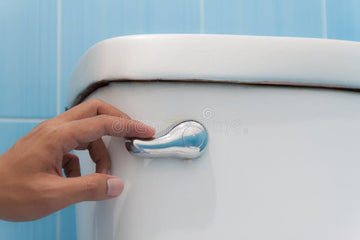In an age where environmental stewardship is paramount, both individuals and organizations are actively seeking methods to conserve resources and minimize expenses. This is where the concept of high-efficiency toilets (HETs) comes into play. Designed primarily to curtail water usage, HETs have become essential fixtures in current plumbing systems, particularly for businesses eager to improve their sustainability efforts. This article delves into high-efficiency toilets, offering a comprehensive understanding of their importance in addressing both ecological and economic issues.
When we explain high-efficiency toilets, it becomes evident that these innovative fixtures are more than just a passing trendthey are a crucial solution. Their engineering not only diminishes the amount of water used per flush but also enhances or maintains flushing performance. This remarkable combination of efficiency resonates with industries committed to reducing their environmental footprint while being cost-effective.

The Role of High-efficiency Toilets in Industrial Environments
Industries are often heavy consumers of water, making the transition to high-efficiency toilets a significant step forward. By lowering water consumption, businesses can not only slash their water expenses but also play an essential role in conserving this vital resource.
The ecological consequences of excessive water use are substantial, contributing to elevated energy consumption, increased carbon emissions, and heightened pressure on natural water supplies. By switching to high-efficiency toilets, industries can help alleviate these issues, aligning their operations with global sustainability initiatives.
Understanding High-efficiency Toilet Functionality
High-efficiency toilets are engineered for optimal water use. They incorporate advanced flushing technologies, such as pressure-assisted or dual-flush systems, which ensure minimal water waste while delivering exceptional waste removal. These innovative systems allow for an average water savings of approximately 20 to 60 percent compared to older models.
For example, while a traditional toilet may consume up to seven gallons per flush, a high-efficiency model uses only 1.28 gallons without sacrificing performance. This significant reduction not only benefits water conservation efforts but also leads to noteworthy cost savings for industries in the long term.
Assessing Eco-friendly Plumbing Options
When we examine high-efficiency toilets, its clear they contribute to a shift towards eco-friendly plumbing solutions. Adopting these modern technologies enhances sustainability and positions organizations as responsible custodians of the environment. Numerous studies show that companies integrating HETs often achieve a significant reduction in their ecological impact.
For guidance on how to install these water-efficient fixtures, explore this resource, which provides step-by-step instructions and tips for maximizing your system's efficiency. This guide is especially valuable for professionals aiming to incorporate these solutions into their existing setups.
Financial Aspects and Savings
The adoption of HETs comes with initial costs that can be daunting for some. However, the long-term savings far surpass these upfront expenses. Many industries experience a return on investment within a few years through lower utility bills. Additionally, various incentives and rebates can often relieve some of the financial strain associated with making the switch.
High-efficiency toilets present a strategic way for industries to reduce operating costs while enhancing their sustainability credentials. Detailed insights into these savings can be found in research presented by Ressler & Mateer.
Trends in Industry Fostering Water Conservation
The uptake of high-efficiency toilets is part of a larger movement towards comprehensive strategies for water conservation in industries globally. These initiatives focus not only on plumbing systems but also on a variety of water-saving practices. Organizations are encouraged to seek out options and technologies to amplify their sustainability efforts.
For further insights into effective water conservation strategies, check out this guide, providing practical tips on conserving water in industrial settingsan invaluable resource for businesses looking to enhance their eco-friendliness.
Expanding Impact with High-efficiency Toilets
The extensive benefits of implementing high-efficiency toilets within industrial contexts are profound. They not only help lower operational costs but also provide businesses an opportunity to demonstrate their commitment to responsible water management and environmental sustainability. As these toilets continue to evolve in both design and efficiency, they offer increasing advantages.
In conclusion, by elucidating the complexities surrounding high-efficiency toilets, we can motivate industries to make informed choices that serve both their operational ambitions and the health of our planet. For a comprehensive understanding of these effective tools, consider exploring resources highlighting various water-saving toilets, available at Scope Zero.

Frequently Asked Questions About High-efficiency Toilets
What defines a high-efficiency toilet?
A high-efficiency toilet is known for its capacity to deliver flush efficiency at or below 1.28 gallons per flush, significantly below the conventional water usage.
Do high-efficiency toilets perform as effectively as standard toilets?
Absolutely! Most high-efficiency toilets utilize cutting-edge flushing technology that matches or exceeds the performance of traditional models while using less water.
Are specialized high-efficiency toilets necessary for industrial facilities?
While standard HETs can suffice, industries might benefit from tailored models designed for higher usage, which optimize both performance and water conservation.
Where can I find more information about high-efficiency toilets?
For further details, visit the EPA's WaterSense page for more insights on toilet efficiency.






